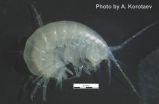(Press-News.org) HANOVER, N.H. - Opening the way for new applications of smart devices, Dartmouth researchers have created the first form of real-time communication that allows screens and cameras to talk to each other without the user knowing it.
Using off-the-shelf smart devices, the new system supports an unobtrusive, flexible and lightweight communication channel between screens (of TVs, laptops, tablets, smartphones and other electronic devices) and cameras. The system, called HiLight, will enable new context-aware applications for smart devices. Such applications include smart glasses communicating with screens to realize augmented reality or acquire personalized information without affecting the content that users are currently viewing. The system also provides far-reaching implications for new security and graphics applications.
The findings will be presented May 20 at the ACM MobiSys'15, a top conference in mobile systems, applications and services. A PDF of the study, further information and demonstration videos are available at the HiLight project website.
In a world of ever-increasing smart devices, enabling screens and cameras to communicate has been attracting growing interest. The idea is simple: information is encoded into a visual frame shown on a screen, and any camera-equipped device can turn to the screen and immediately fetch the information. Operating on the visible light spectrum band, screen-camera communication is free of electromagnetic interference, offering a promising alternative for acquiring short-range information. But these efforts commonly require displaying visible coded images, which interfere with the content the screen is playing and create unpleasant viewing experiences.
The Dartmouth team studied how to enable screens and cameras to communicate without the need to show any coded images like QR code, a mobile phone readable barcode. In the HiLight system, screens display content as they normally do and the content can change as users interact with the screens. At the same time, screens transmit dynamic data instantaneously to any devices equipped with cameras behind the scene, unobtrusively, in real time.
HiLight supports communication atop any screen content, such as an image, movie, video clip, game, web page or any other application window, so that camera-equipped devices can fetch the data by turning their cameras to the screen. HiLight leverages the alpha channel, a well-known concept in computer graphics, to encode bits into the pixel translucency change. HiLight overcomes the key bottleneck of existing designs by removing the need to directly modify pixel color values. It decouples communication and screen content image layers.
"Our work provides an additional way for devices to communicate with one another without sacrificing their original functionality," says senior author Xia Zhou, an assistant professor of computer science and co-director of the DartNets (Dartmouth Networking and Ubiquitous Systems) Lab. "It works on off-the-shelf smart devices. Existing screen-camera work either requires showing coded images obtrusively or cannot support arbitrary screen content that can be generated on the fly. Our work advances the state-of-the-art by pushing screen-camera communication to the maximal flexibility."
INFORMATION:
Assistant Professor Xia Zhou is available to comment at Xia.Zhou@dartmouth.edu.
Broadcast studios: Dartmouth has TV and radio studios available for interviews. For more information, visit: http://www.dartmouth.edu/~opa/radio-tv-studios/
Singapore, 18 May 2015 - A seven-year scientific study has revealed that microbial communities in urban waterways has the potential to play an important role in cleansing Singapore's waterways and also act as raw water quality indicators.
The study found that canals designed to channel rainwater host microbial communities that could remove and neutralise organic pollutants in raw water. These organic pollutants are currently at trace levels in raw water - well below the United States-Environmental Protection Agency (US-EPA) drinking water standards - which is removed ...
In a letter to the Medical Journal of Australia published today, a Monash University-led team is asking for hepatitis C virus patients to gain improved access to drugs to prevent liver related deaths.
Hepatitis C virus (HCV) infection is a major public health burden in Australia, with estimates of 230,000 people chronically infected.
The research team are calling for the government to subsidise a new therapy which has high cure rates, known as direct acting antiviral (DAA) therapy.
Monash University Professor William Sievert said a delay in access to DAA treatment ...
Washington, DC (May 18, 2015) -- Patients faced with a choice of surgical options want to engage their physicians and take a more active role in decision-making, according to a study (abstract 567) released at Digestive Disease Week® (DDW) 2015. Further, those physicians must provide better support tools to help patients participate in the decision-making process. The study found that patients consult multiple sources (Internet, family, friends, doctors, etc.) and say that while doctors provide the most believable information, it was also the least helpful.
"In this ...
The historical past is important when we seek to understand environmental conditions as they are today and predict how these might change in the future. This is according to researchers from Umeå University, whose analyses of lake-sediment records show how lake-water carbon concentrations have varied depending on long-term natural dynamics over thousands of years, but also in response to human impacts over the past several hundred years. The study has been published in PNAS (the Proceedings of the National Academy of Sciences).
Environmental monitoring programmes ...
Just as alchemists always dreamed of turning common metal into gold, their 19th century physicist counterparts dreamed of efficiently turning heat into electricity, a field called thermoelectrics. Such scientists had long known that in conducting materials the flow of energy in the form of heat is accompanied by a flow of electrons. What they did not know at the time is that it takes nanometric-scale systems for the flow of charge and heat to reach a level of efficiency that cannot be achieved with larger scale systems. Now, in a paper published in EPJ B Barbara Szukiewicz ...
The grounding of a giant iceberg in Antarctica has provided a unique real-life experiment that has revealed the vulnerability of marine ecosystems to sudden changes in sea-ice cover.
UNSW Australia scientists have found that within just three years of the iceberg becoming stuck in Commonwealth Bay - an event which dramatically increased sea-ice cover in the bay - almost all of the seaweed on the sea floor had decomposed, or become discoloured or bleached due to lack of light.
"Understanding the ecological effect of changes in sea-ice is vital for understanding the future ...
Scientists are attempting to mimic the memory and learning functions of neurons found in the human brain. To do so, they investigated the electronic equivalent of the synapse, the bridge, making it possible for neurons to communicate with each other. Specifically, they rely on an electronic circuit simulating neural networks using memory resistors. Such devices, dubbed memristor, are well-suited to the task because they display a resistance, which depends on their past states, thus producing a kind of electronic memory. Hui Zhao from Beijing University of Posts and Telecommunications, ...
An international team of scientists have discovered a new species of typhlogammarid amphipod in the limestone karstic caves of Chjalta mountain range -- the southern foothills of the Greater Caucasus Range. The study was published in the open access journal Subterranean Biology.
The new amphipod, which belongs to the genus Zenkevitchia, is the second species known from this group. This new addition to the genus is named Zenkevitchia yakovi after the famous Russian biospeleologist Prof Yakov Birstein.
Typhlogammarid amphipods are a group blind and unpigmented endemic ...
Radiotherapy used in cancer treatment is a promising treatment method, albeit rather indiscriminate. Indeed, it affects neighbouring healthy tissues and tumours alike. Researchers have thus been exploring the possibilities of using various radio-sensitizers; these nanoscale entities focus the destructive effects of radiotherapy more specifically on tumour cells. In a study published in EPJ D, physicists have now shown that the production of low-energy electrons by radio-sensitizers made of carbon nanostructures hinges on a key physical mechanism referred to as plasmons ...
This news release is available in German.
Scientists from Paris and Helmholtz-Zentrum Berlin have been able to switch ferromagnetic domains on and off with low voltage in a structure made of two different ferroic materials. The switching works slightly above room temperature. Their results, which are published online in Scientific Reports, might inspire future applications in low-power spintronics, for instance for fast and efficient data storage.
Information can be written as a sequence of bit digits, i.e. "0" and "1". Materials which display ferromagnetism ...




